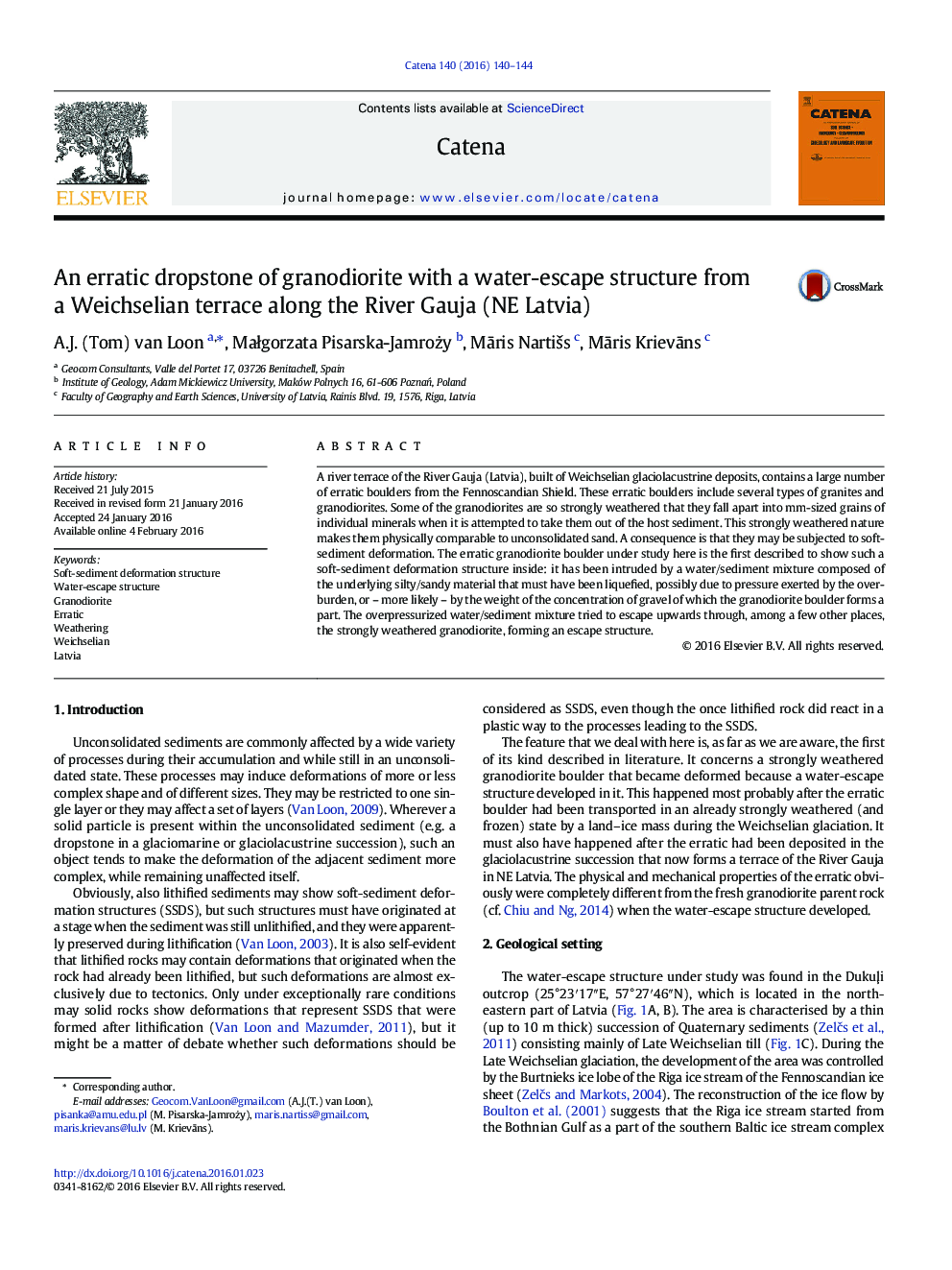| Article ID | Journal | Published Year | Pages | File Type |
|---|---|---|---|---|
| 4570926 | CATENA | 2016 | 5 Pages |
•A strongly weathered Scandinavian erratic was intruded by sand.•The intrusion was due to liquefaction caused by the weight of the overburden.•This is the first report of soft-sediment deformation inside an igneous rock.
A river terrace of the River Gauja (Latvia), built of Weichselian glaciolacustrine deposits, contains a large number of erratic boulders from the Fennoscandian Shield. These erratic boulders include several types of granites and granodiorites. Some of the granodiorites are so strongly weathered that they fall apart into mm-sized grains of individual minerals when it is attempted to take them out of the host sediment. This strongly weathered nature makes them physically comparable to unconsolidated sand. A consequence is that they may be subjected to soft-sediment deformation. The erratic granodiorite boulder under study here is the first described to show such a soft-sediment deformation structure inside: it has been intruded by a water/sediment mixture composed of the underlying silty/sandy material that must have been liquefied, possibly due to pressure exerted by the overburden, or – more likely – by the weight of the concentration of gravel of which the granodiorite boulder forms a part. The overpressurized water/sediment mixture tried to escape upwards through, among a few other places, the strongly weathered granodiorite, forming an escape structure.
